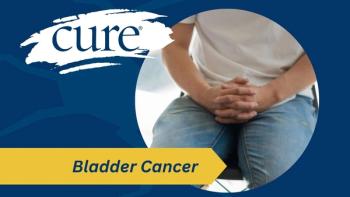
Winterizing Exercise With Cancer
This year, as winter approaches, I’ve been thinking about how I winterize my life and my exercise so that I am ready for more when spring arrives.
I admit it. I am not in perfect physical shape. I struggle to do a push up. I breathe darn hard when climbing hills (I blame 20 years of flatland living) and let’s not talk about jiggling arms.
But despite all that and more, exercise has been a mainstay in my life with cancer since the moment I got knocked over by the word “metastatic.”
Ignoring the cautionary advice of my husband, I went straight to Google to find the prognosis for stage 4 metastatic breast cancer. Those stats are not great.
I quickly started looking for science that would support—not replace—the treatment my oncologist recommended. Serendipity took me almost immediately to a mouse study about exercise affecting treatment response.
I had cancer.
I’d be getting treatment.
I had a treadmill.
I was on that treadmill within minutes of reading that article. Over time I’d realize that adding exercise, was really about adding a sense of control over what was happening to me. It wasn’t about rectifying something I’d done wrong. It wasn’t about blaming myself. It was about empowering myself.
I had a pretty tough treatment regimen and some days I used the treadmill for only short periods but I aimed for five out of seven days of at least 15 minutes.
This continued all through the Illinois winter months, when it can be hard to do much of anything even if cancer isn’t in the picture.
This year, as winter approaches, I’ve been thinking about how I winterize my life and my exercise so that I am ready for more when spring arrives.
Do something different: It’s so easy to cuddle up and let winter cold blanket you with inaction. Since my diagnosis, there’ve been some years when I let this happen. I always regret it. It’s hard when your favorite activities—mine happen to be bike riding and kayaking—are only practical part of the year. This winter, I’m going to focus again on increasing my flexibility, which is something I ignore for most of the year.
Bring the familiar inside: My treadmill finally broke about a year ago and hasn’t been replaced. I miss it (a lot) but the expense is too much for another one that will stand up to daily use by multiple people. This year, I’m going to relent and bring my bike inside and place it on an exercise stand. I don’t know yet how it will work but since biking has been one of my joys over the last decade, I am hopeful this will be a success.
Resist don’t desist: I have been using the outdoor body-weight machines in my town to avoid getting a gym membership. It probably isn’t as effective for muscle strength as weight machines but in warm months I combine a fast two-mile walk with these machines. In the winter, I bring it indoors with resistance bands and online videos.
Gear up: I still need to get outside. I don’t trust myself on icy paths or sidewalks because chemo-induced neuropathy means I don’t always recognize too-cold hands or feet that aren’t correctly placed. I stay flexible about where I choose to go and what I do but I always dress in layers and keep my hands and feet extra protected.
As with anything for people with cancer, always check with your doctors before you make changes. I am fortunate that I don’t have many physical limitations in terms of exercise choices but that is not the case for everyone. That said, there are many low-impact ways to increase movement. If your oncologist or other health care provider is unsure about adding exercise of any type to your life, consider requesting a referral to an exercise specialist or physical therapist who has knowledge of cancer.
Good luck!
For more news on cancer updates, research and education, don’t forget to





